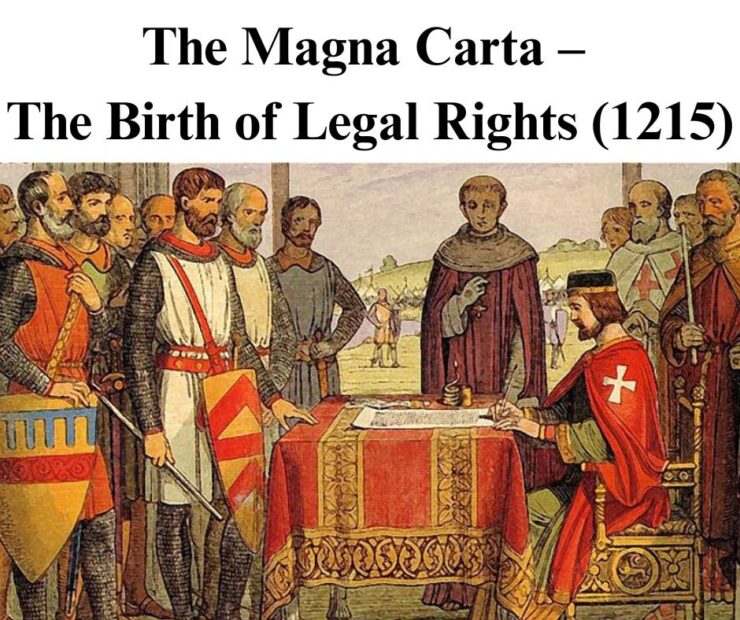
The Magna Carta – The Birth of Legal Rights (1215)
In the year 1215, a group of rebellious barons forced King John of England to sign a document that would change history: the Magna Carta.
What began as a peace treaty soon became the foundation for constitutional law and human rights around the world.
What Was the Magna Carta?
•Signed at Runnymede on 15 June 1215, the Magna Carta (Latin for “Great Charter”) was meant to limit the powers of the king.
•It was the first time in English history that a monarch agreed he was not above the law.
Key Principles Introduced:
•No taxation without representation — the king could not levy taxes without approval.
•Right to a fair trial — “to no one will we sell, to no one deny or delay right or justice.”
•Due process — the law must be followed, even by the crown.
•Protection for church rights, barons’ lands, and limits on arbitrary imprisonment.
Why It Matters:
Though the original charter was annulled shortly after being signed, its ideas lived on, influencing:
•The English Bill of Rights (1689)
•The U.S. Constitution & Bill of Rights
•The Universal Declaration of Human Rights
Legacy:
•Only four original copies of the 1215 Magna Carta survive today.
•It is celebrated as the first step toward democracy in the English-speaking world.
The Magna Carta didn’t end monarchy —
but it planted the seed of liberty, law, and the rights of people that still grow today.
